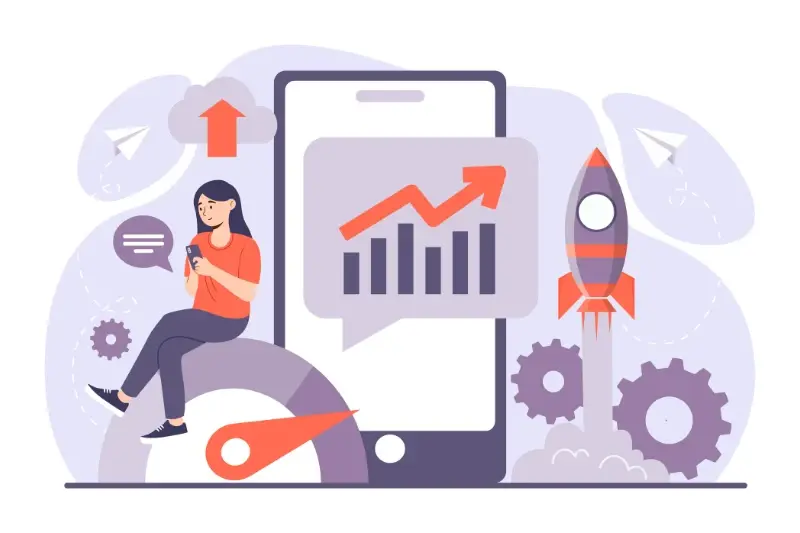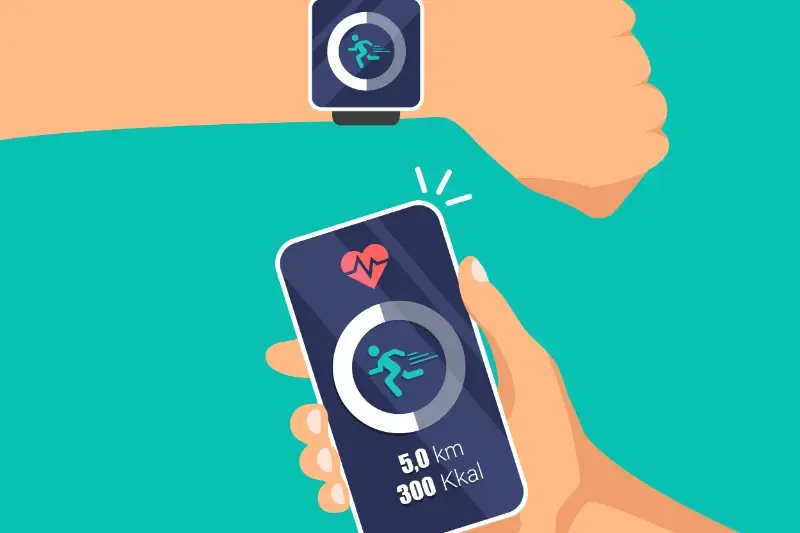Edge Computing vs Cloud Computing: Which Is Right for Your App?
Your mobile app loads instantly when users are standing right outside your office, but crawls to a halt when they're halfway across the world. Sound familiar? This performance puzzle has led thousands of developers to question whether traditional cloud computing is still the best infrastructure choice for their apps—or if edge computing might be the answer they've been looking for.
The truth is, most app developers I work with don't fully understand the difference between these two approaches. They know cloud computing exists (who doesn't use AWS or Google Cloud these days?) but edge computing often feels like some mysterious new technology that's too complex to grasp. Here's the thing though—it's not as complicated as it sounds, and the choice between them could make or break your app's success.
The wrong infrastructure choice can turn a brilliant app idea into a frustrating user experience that people abandon within seconds
Whether you're building a gaming app that needs lightning-fast responses or a simple productivity tool that just needs to work reliably, understanding these two infrastructure options will help you make the right infrastructure choice for your specific needs. Let's break down what each approach actually means and when you should use them.
What Is Edge Computing?
Edge computing is a way of processing data closer to where it's actually being used—rather than sending it all the way to a distant data centre. Think of it like having a local shop on your street instead of having to travel to the city centre every time you need something.
When you use an app on your phone, it often needs to send information somewhere to be processed. With traditional cloud computing, this data travels to massive data centres that could be hundreds of miles away. But with edge computing, the processing happens much closer to you—maybe at a local mobile phone tower or even on your device itself.
This approach has become increasingly popular because it can make apps faster and more responsive. Instead of waiting for data to travel back and forth across the internet, your app can get the information it needs much more quickly.
Key Benefits of Edge Computing
- Faster response times for your app users
- Reduced strain on internet bandwidth
- Better performance in areas with poor internet connections
- Enhanced privacy since data doesn't always need to leave the local area
- Improved reliability when internet connections are unstable
For mobile app developers, edge computing opens up new possibilities—especially for apps that need real-time responses or work in challenging network conditions.
What Is Cloud Computing?
Cloud computing is like having a massive computer warehouse that you can access from anywhere in the world through the internet. Instead of storing your mobile app's data and running its processes on a single server in your office, everything happens in these huge data centres owned by companies like Amazon, Google, or Microsoft.
When your mobile app uses cloud computing, it's essentially borrowing computing power from these remote servers. Your app sends requests over the internet to these data centres, they process the information, and then send the results back to your user's phone. This means your app can handle millions of users without you needing to buy and maintain your own expensive servers.
Key Benefits of Cloud Computing for Mobile Apps
- Scale up or down instantly based on how many people use your app
- Pay only for the computing power you actually use
- Access your app's data from anywhere in the world
- Automatic backups and security updates
- No need to maintain physical servers
The main trade-off here is that your app needs to send data back and forth to these remote servers, which can sometimes create delays—especially if your users are far away from the nearest data centre.
Most successful mobile apps start with cloud computing because it's cost-effective and flexible, then consider other options as they grow.
Speed and Performance Differences
When it comes to speed, edge computing wins hands down—and it's not even close. I've worked on apps where every millisecond counts, and the difference between edge and cloud processing can make or break the user experience. Edge computing processes data right where it's needed, which means your app responds faster than a cloud-based solution that has to send data halfway around the world and back.
Think about it this way: your data travels shorter distances with edge computing. No more waiting for information to bounce between your phone, a distant server, and back again. This is particularly noticeable in apps that need real-time responses—gaming apps, video calls, or anything involving live interactions.
Performance Comparison
| Processing Type | Response Time | Best For |
|---|---|---|
| Edge Computing | 1-10 milliseconds | Real-time apps, gaming, AR/VR |
| Cloud Computing | 50-200 milliseconds | Data analysis, storage, complex calculations |
Cloud computing isn't slow—it's just different. It excels at handling complex tasks that don't need instant responses. Your app might take a bit longer to process large amounts of data, but it can handle much bigger workloads than edge computing. The trade-off between speed and processing power is something you'll need to consider based on what your app actually does.
Cost Considerations for Mobile Apps
Let's talk money—because that's what keeps most of us up at night when we're planning a mobile app project. I've worked with clients who've made expensive mistakes by not thinking through their infrastructure choice properly, and trust me, it's not fun explaining why their monthly bills have tripled.
Edge computing typically means higher upfront costs. You're paying for specialised hardware, edge servers, and often more complex development work. Think of it as buying a house—big initial investment, but your monthly running costs might be lower. Cloud computing works more like renting; lower upfront costs but you'll pay monthly fees that can add up, especially as your app grows and processes more data.
Where Your Money Actually Goes
With cloud computing, you're paying for data transfer, storage, and processing power. If your mobile app suddenly goes viral (wouldn't that be nice!), your costs can spike dramatically overnight. Edge computing spreads these costs differently—you might pay more initially but have better predictability.
The biggest mistake I see is clients choosing based on immediate costs rather than long-term scalability and usage patterns
Here's what I always tell clients: think about your app's expected usage patterns. A gaming app with constant real-time interactions might benefit from edge computing's predictable costs, whilst a simple productivity app could work brilliantly with cloud computing's pay-as-you-go model. This kind of strategic thinking is crucial when planning your long-term mobile app strategy.
Security and Data Protection
When it comes to keeping your app's data safe, both edge computing and cloud computing have their strengths—but they work quite differently. With cloud computing, your data travels from the user's device to a distant server, gets processed, then comes back. That's a lot of ground to cover, which means more opportunities for someone to intercept it along the way.
Edge computing keeps things much closer to home. Since the data doesn't need to travel as far, there are fewer points where it could be compromised. Think of it like posting a letter to your neighbour versus sending it across the country—there's simply less chance for it to go missing or be tampered with.
Key Security Differences
- Cloud computing relies on centralised security measures that protect massive amounts of data
- Edge computing distributes security across multiple smaller nodes
- Data breaches in cloud systems can affect millions of users at once
- Edge computing limits the impact of any single security incident
- Cloud providers often have dedicated security teams and advanced protection tools
The truth is, both approaches can be secure when implemented properly. Cloud providers have teams of security experts and massive budgets for protection—something most individual companies can't match. But edge computing's distributed nature means you're not putting all your eggs in one basket, which has its own advantages. Remember that regardless of your infrastructure choice, you'll still need to handle legal protections like terms of service for your app.
Choosing the Right Option for Your App Type
After years of building mobile apps for all sorts of clients, I've learned that there's no one-size-fits-all answer when it comes to infrastructure choice. The right technology integration depends entirely on what your app actually does.
Gaming apps and augmented reality experiences need lightning-fast responses—that's where edge computing shines. Every millisecond counts when you're trying to keep users engaged. On the flip side, if you're building a productivity app or social platform that handles lots of data processing, cloud computing might be your best bet.
App Types That Love Edge Computing
- Real-time gaming apps
- AR and VR experiences
- Live streaming platforms
- IoT control apps
- Location-based services
Apps That Thrive on Cloud Computing
- Social media platforms
- E-commerce applications
- Data analytics tools
- File storage apps
- Enterprise software
The truth is, many modern mobile apps use a hybrid approach—combining both edge and cloud computing to get the best of both worlds. Your user authentication might happen in the cloud whilst your real-time location sharing features run at the edge.
Start with your user's needs, not the technology. If your app requires instant responses, edge computing is probably worth the investment. If you need powerful processing and storage, cloud computing is your friend.
IoT applications present particularly interesting opportunities for edge computing. If you're building something that needs to connect your mobile app to smart home devices, processing data at the edge can provide much more responsive controls.
Even basic features like adding dark mode to your mobile app can benefit from understanding where your app's processing happens, especially if you're syncing user preferences across devices.
Once you've decided on your infrastructure approach, you'll need to choose the right partners. If you're going down the edge computing route, selecting the right edge computing provider becomes crucial for your app's success.
Conclusion
After building mobile apps for over eight years, I can tell you that choosing between edge computing and cloud computing isn't really about picking a winner—it's about finding what works best for your specific app. Both technologies have their strengths and weaknesses, and the right choice depends on what you're trying to achieve.
If your app needs lightning-fast responses, handles sensitive data, or works in areas with poor internet connections, edge computing might be your best bet. Gaming apps, augmented reality experiences, and healthcare applications often benefit from processing data closer to users. But if you're building something that needs massive storage, wants to keep costs predictable, or requires complex data analysis, cloud computing is probably the way to go.
The truth is, many successful apps use both approaches together. They might process urgent data at the edge for speed whilst backing up everything to the cloud for storage and analysis. This hybrid approach gives you the best of both worlds—though it does add complexity to your development process.
What matters most is understanding your users' needs and your app's requirements. Don't get caught up in the latest technology trends; focus on what will actually make your app better for the people using it.
Share this
Subscribe To Our Blog
You May Also Like
These Related Stories

How Edge Computing Is Revolutionising Mobile App Performance

Your Complete Guide to Smartwatch App Development





